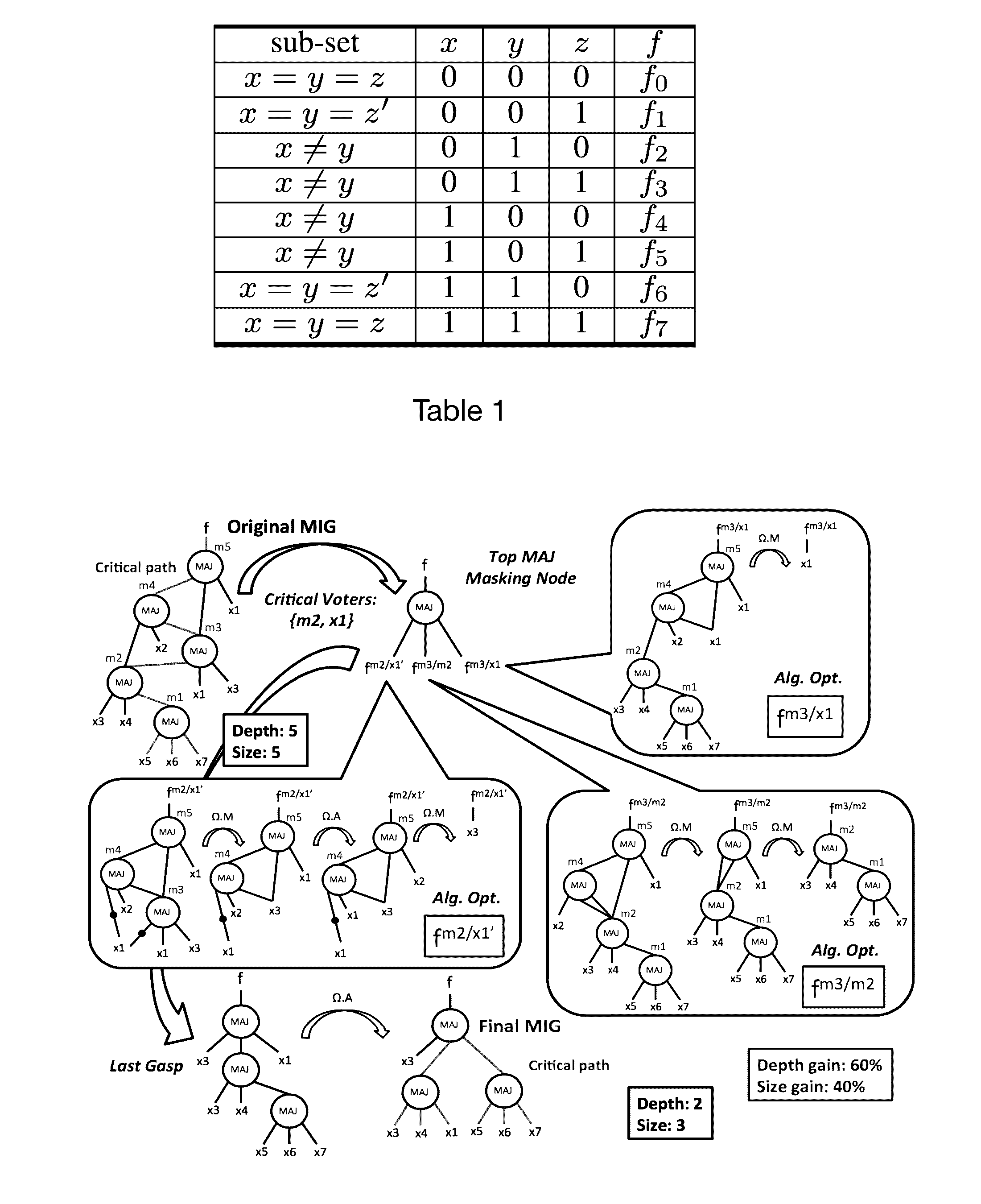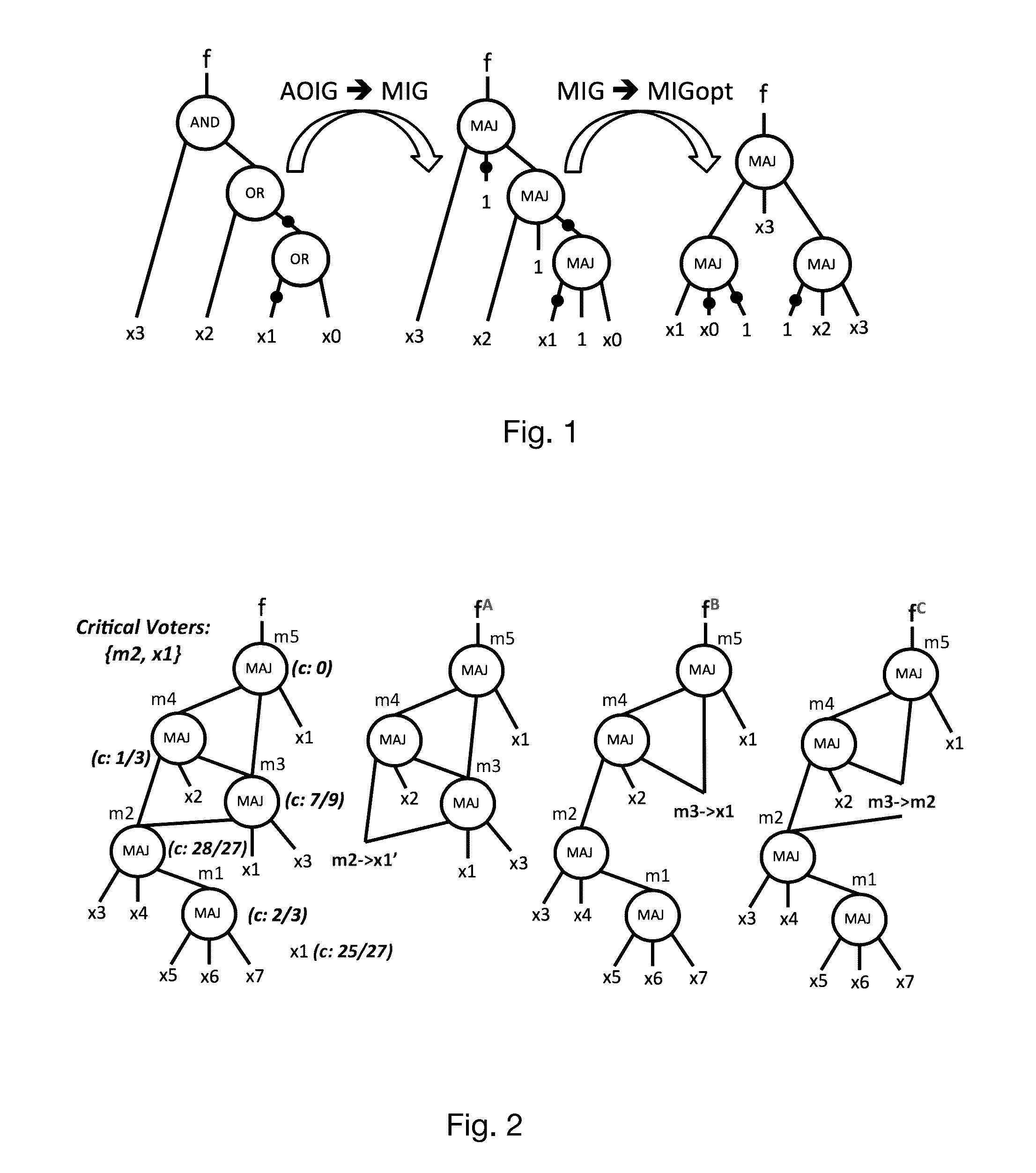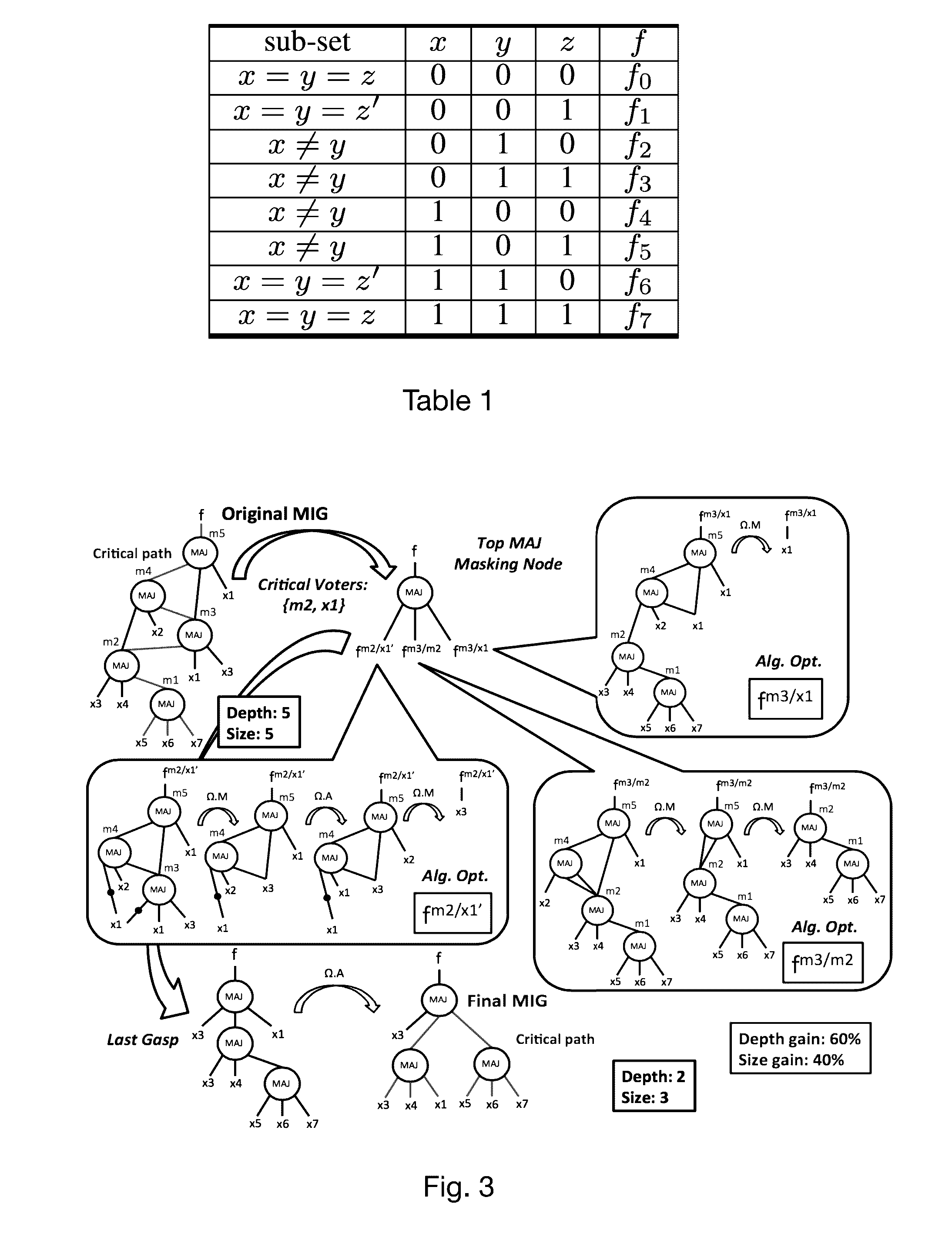Boolean logic optimization in majority-inverter graphs
a logic optimization and majority-inverter graph technology, applied in the field of logic optimization, can solve the problems of reducing the area of the optimization area, requiring too long runtime, not improving the quality of the circuit, etc., and preventing global (far-sighted) optimization opportunities.
- Summary
- Abstract
- Description
- Claims
- Application Information
AI Technical Summary
Benefits of technology
Problems solved by technology
Method used
Image
Examples
Embodiment Construction
[0036]The following description is organized as follows.
[0037]The section Background and Motivation provides a background on logic optimization and on MIGs.
[0038]The section Harnessing Voting Resilience in MIG discusses on the logic flexibility of MIGs, exploiting the intrinsic voting resilience of majority nodes.
[0039]The section Boolean Logic Optimization in MIG describes our Boolean optimization methodology based on MIGs.
[0040]The section Experimental results shows the experimental results for our MIG Boolean optimization employed either stand-alone or as front-end to a commercial ASIC design flow.
[0041]Lastly the section Conclusions concludes the description.
BACKGROUND AND MOTIVATION
[0042]This section gives a background on logic optimization and MIGs.
[0043]A. Logic Optimization
[0044]Logic optimization methods are usually divided into two groups: Algebraic methods, which are fast, and Boolean methods, which are slower but achieve better results [10]. Traditional algebraic methods...
PUM
 Login to View More
Login to View More Abstract
Description
Claims
Application Information
 Login to View More
Login to View More - R&D
- Intellectual Property
- Life Sciences
- Materials
- Tech Scout
- Unparalleled Data Quality
- Higher Quality Content
- 60% Fewer Hallucinations
Browse by: Latest US Patents, China's latest patents, Technical Efficacy Thesaurus, Application Domain, Technology Topic, Popular Technical Reports.
© 2025 PatSnap. All rights reserved.Legal|Privacy policy|Modern Slavery Act Transparency Statement|Sitemap|About US| Contact US: help@patsnap.com



